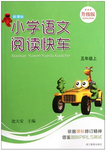题目内容
.
Plants are very important living things. Life could not go on if there were no plants. This is because plants can make food from air, water and sunlight. Animals and man cannot make food from air, water and sunlight. Animals get their food by eating plants and other animals. Therefore, animals and man need plants in order to live. This is why we find that there are so many plants around us.
If you look carefully at the plants around you, you will find that there are two kinds of plants: flowering plants and non-flowering plants.
Flowering plants can make seeds. The seeds are protected by the fruits. Some fruits have one seed, some have two, three or four, and some have many seeds. But a few fruits have no seeds at all. An example of a fruit without seeds is the banana fruit.
Most non-flowering plants do not grow from seeds. They grow from spores (胚芽). Spores are very small. Some spores are so small and light that they can float in the air. We may say that spores are quite the same as seeds. When these spores are all on wet and shady places, they usually grow into new plants.
54. The main idea of the first paragraph is that ______.
A. plants are important for life B. plants cannot grow without air
C. there are many plants in the world D. we can not live without water
55. Plants can make food from______.
A. flower, water and air B. water, sunlight and air
C. air, water and soil D. air, sun and light
56. This passage may be taken from______.
A. a medicine book B. a novel
C. a science magazine D. an experiment report
57. The underlined word “protected” in the third paragraph can be replaced by ______.
A. damaged B. polluted C. prevented D. guarded
54-57 ABCD

 阅读快车系列答案
阅读快车系列答案Plants can’t communicate by moving or making sounds, as most animals do. Instead, plants produce volatile compounds (挥发性化合物) —— chemicals that easily change from a liquid to a gas. A flower’s sweet smell, for example, comes from such volatile compounds to attract insects such as bugs and bees.
Plants can also discover volatile compounds produced by other plants. A tree under attack by hungry insets, for instance, may give off these chemicals in order to let other trees know about the attack. In response, the other trees may send off their chemicals to keep the bugs away —— or even chemicals that will attract the bugs’ natural enemies.
Now scientists have created a quick way to understand what plants are saying: a chemical sensor (传感器) called an “electronic nose”. The “e-nose” can tell such compounds as plants make. When plants are attacked, scientists say, the e-nose could help quickly decide whether plants are being eaten by insects. But today, the only way to spot such insects is to inspect individual plants by observing them. This is a challenging task for managers of greenhouses, including those that can house thousands of plants. The research team is working with an e-nose that can recognize volatile compounds. Inside the device, 13 sensors chemically react with volatile compounds based on the interactions (相互作用), and then the e-nose will give off electronic signals that the scientists can analyze by using computer software.
To test the e-nose, the team presented it with healthy leaves from cucumber, pepper and tomato plants, all being common greenhouse crops. Then scientists collected samples of the air around damaged leaves from each type of crop. These plants had been damaged either by insects or by scientists who made holes in the leaves with a hole punch (打孔器).
The e-nose, it turns out, can identify healthy cucumber, pepper and tomato plants based on the volatile compounds they produce. It could also identify tomato leaves that had been damaged. But even more impressive, the device could tell which type of damage —— by insects or with a hole punch —— had been done to the tomato leaves.
With some fine-tuning (微调), a device like the e-nose can one day be used in greenhouses to quickly spot harmful bugs, the researchers say. A device like this can also be used to identify fruits that are perfectly ripe and ready to pick and eat, says Natalia Dudareva, a biochemist at Purdue University in West Lafayette, India, who studies smells of flowers and plants. Hopefully, scientists believe, the device can bring large benefits to greenhouse managers in the near future.
1.We learn from the text that plants communicate with each other by ______.
|
A.making some sounds |
|
B.waving their leaves |
|
C.producing some chemicals |
|
D.sending out electronic signals |
2.What did the scientists do to find out if the e-nose worked?
|
A.They fixed 13 sensors inside the device. |
|
B.They presented it with all common crops. |
|
C.They collected different damaged leaves. |
|
D.They do tests on damaged and healthy leaves. |
3.According to the writer, the most amazing thing about the e-nose is that it can ______.
|
A.pick out ripe fruits quite expertly |
|
B.spot the insects in a very quick way |
|
C.tell different damages to leaves |
|
D.recognize unhealthy tomato leaves |
4.We can infer from the last paragraph that the e-nose ______.
|
A.is unable to tell the smell of flowers |
|
B.is not yet tested in greenhouses |
|
C.is designed by scientists at Purdue |
|
D.is helpful in killing harmful insects |
– Can you tell me ___________?
– An engineer from Jinan Iron and Steel Plants.
|
A.what your friend is |
B.who your friend is |
|
C.what is your friend |
D.who is your friend |